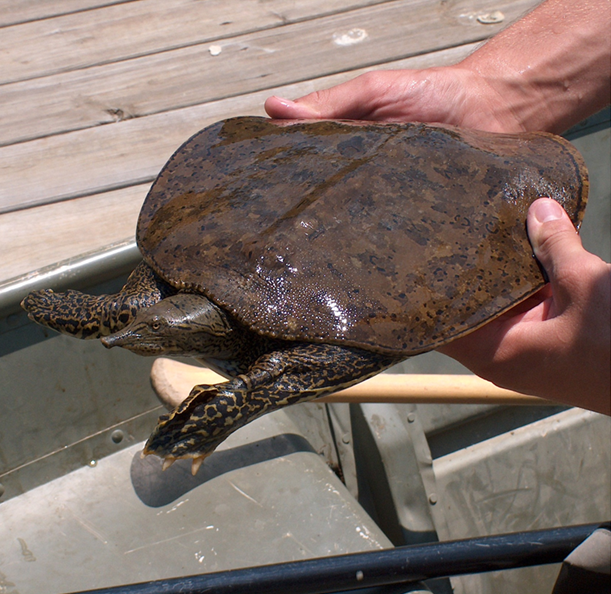Body-size and aerial basking dynamics of the Spiny Softshell (Apalone spinifera) in a human-modified landscape in Tennessee, USA
DOI:
https://doi.org/10.17161/jnah.v2022i1.14515Keywords:
Exploitative competition, Thermoregulation, Conservation, Human pressure, Reptile, Habitat use, Habitat selection, Morphometrics, Ontogenetic shift, OntogenyAbstract
Spiny Softshells (Apalone spinifera) are found in aquatic environments throughout much of the central-eastern USA. Although this species is widespread throughout much of Tennessee, little is known about Spiny Softshells in the state’s northeastern counties. Further, little work has investigated the role of Spiny Softshell body size on resource use, and the morphometrics of the species in a human-modified ecosystem. Here we present results of a four-month capture and basking observation study conducted in 2004. We investigated whether larger body size was positively associated with presence at limited aerial basking resources that are potentially important for thermoregulation. We found that hoop trap captures positioned next to basking sites, a proxy for aerial basking resource use, were not associated with sex or body size measurements. Opportunistic basking observations revealed most individuals basked in the afternoon. Our study, while short in duration and of low sample size, builds understanding on the body size and intraspecific effects of resource use by Spiny Softshells in a human-modified ecosystem.
Downloads
Published
Issue
Section
License
Copyright (c) 2022 Christopher O'Bryan, M. Kevin Hamed, Thomas F. Laughlin

This work is licensed under a Creative Commons Attribution-NonCommercial 4.0 International License.
Copyright is held by the authors. Articles in JNAH are made available under a Creative Commons Attribution-NonCommercial 4.0 International license.

